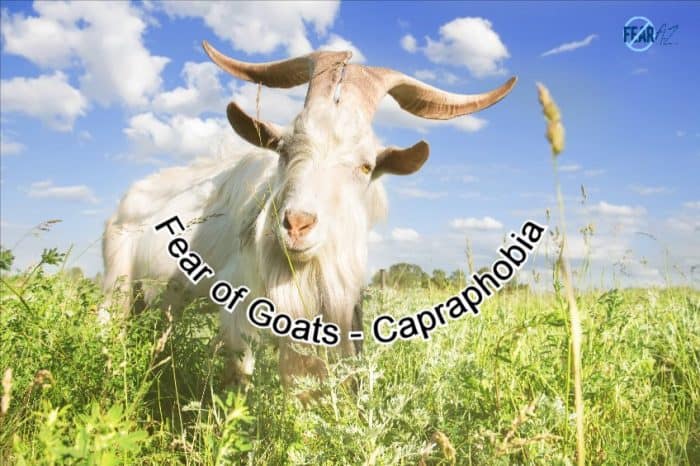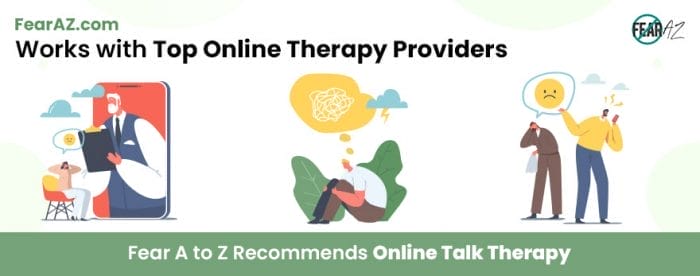Share This Article
Does Capraphobia Get Your Goat?
Do you feel threatened by a goat’s stare? Does watching the National Geographic channel become a nightmare when the show is about goats?
Do you start trembling and sweating when you see goats crossing a road or highway?
You don’t have to be embarrassed if your answer to these questions is yes. You may have a rare phobia called capraphobia. But don’t worry, you are not alone.
You may feel uncomfortable and ashamed to discuss this fear of goats with your friends and family. Nevertheless, it is no different than other phobias.
The first step in getting rid of the fear is to acknowledge it. Next, try self-help methods like relaxation, exposure therapy, and lifestyle changes. If things don’t improve, seek the help of a therapist to get your life back on track.
So, if you feel you have capraphobia but aren’t entirely sure, read on to learn about the causes, symptoms, and treatments.

Capraphobia Causes
Most phobias stem from common causes like past trauma or observing someone else with a similar phobia during your childhood. Long-term stress and genetic factors can also play a role.
You might have had bad experiences with goats in the past, or you might have visited a farm and seen a goat injure someone.
These instances could have played a vital role in the development of your phobia.
You have probably seen a list of the most common phobias, but capraphobia might not have been part of it. Nonetheless, it is a real phobia.
Let’s learn more about capraphobia.
Capraphobia Explained
Capraphobia may be a subcategory of zoophobia (fear of animals).
In the case of zoophobia, a person fears many or all types of animals.
But if you have capraphobia, you will avoid going to places where you may come face-to-face with goats, such as pet farms and farmhouses.
This “goats fear” won’t affect your day-to-day life like other phobias, but you may sometimes wish you didn’t have it.
Now, let’s take a look at the symptoms.
Capraphobia Symptoms
There are no specific symptoms to diagnose a person with capraphobia. However, some common physical and psychological symptoms may help determine if you have a phobia of goats.
Physical Symptoms
- Difficulty breathing when you see a goat
- Nausea
- Increased heart rate (heart palpitation)
- Choking sensation
- Dizziness
- Shortness of breath (dyspnea)
- Chest pain
If your child has this fear, they may show the following symptoms:
- Seeing a goat will make them cling to you
- They will start throwing tantrums when they see a goat
- They may begin to cry uncontrollably
- They may freeze on the spot when they see a goat
If you see these signs, treat your child early so this doesn’t develop into a full-blown phobia.
Psychological Symptoms
- Inability to tell what’s real and what’s not (dissociation)
- Stress
- Your body feels out of control
- Anxiety
- Depression
- Feeling overwhelmed
- Constantly thinking about goats
If you notice that your symptoms are severe and triggering anxiety and panic attacks, it is likely that your phobia has progressed.
How Is Capraphobia Diagnosed?
Typically, people with a phobia of goats fear situations that could trigger their phobia. They tend to avoid those situations. At first, this may seem like a solution, but avoiding the source of your fear can worsen the phobia.
Based on how severe your symptoms are you can determine whether you have an advanced or an initial phobia.
If you’re in the initial stage, you can reduce the symptoms significantly with self-help techniques.
Capraphobia Treatment
Phobias are anxiety disorders, so no medicine or surgery can completely remove the phobia. However, many self-help techniques have been effective in reducing the symptoms.
Self-Help Techniques
Relaxation
Relaxation lowers our blood pressure and relieves tension by slowing down our heart rate. This helps you have a clearer and calmer mind.
Learn more about progressive muscle relaxation techniques and practice deep breathing exercises for starters.
Regular practice will alleviate your fear while helping you develop positive thinking, improve concentration, and sharpen your decision-making skills.
Gradual Exposure
Typically, you need professional supervision for exposure therapy. But if you have only mild symptoms, you might start gradually on your own.
Begin by exposing yourself to the object of your fear—a picture of a goat, for a start.
Later, move on to facing the actual object of your fear—the goat itself.
Have someone you trust beside you, like a family member or a friend. Don’t approach the goat right away; take your time.
Initially, observe it from a distance. If possible, leash the goat or ask your friend to hold it for the time being.
Slowly work your way to getting close to the goat and touching it.
Phobias develop over the years and may take years to overcome, so take it slow.
With each step, you will gain confidence.
Modify Your Thoughts
You may have only focused on the negative aspects of the situation so far. Your mind may even exaggerate the fearful thoughts. Remind yourself that goats are not as scary as you perceive them to be.
If you see a goat, believe that you can walk past it. You may fail the first time, but with time, you will notice how your anxiety has reduced significantly.




